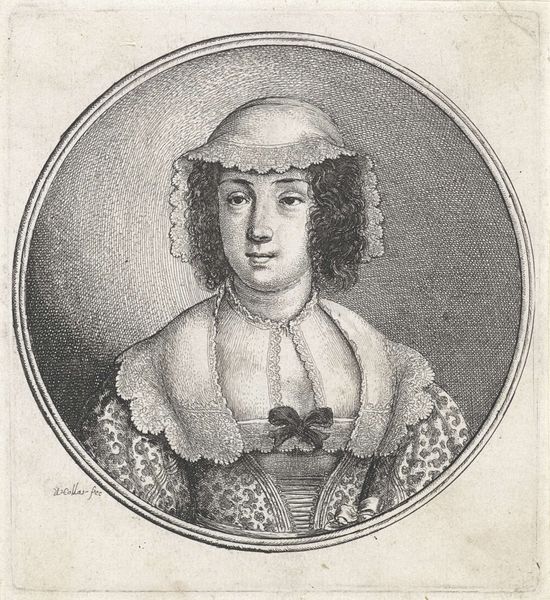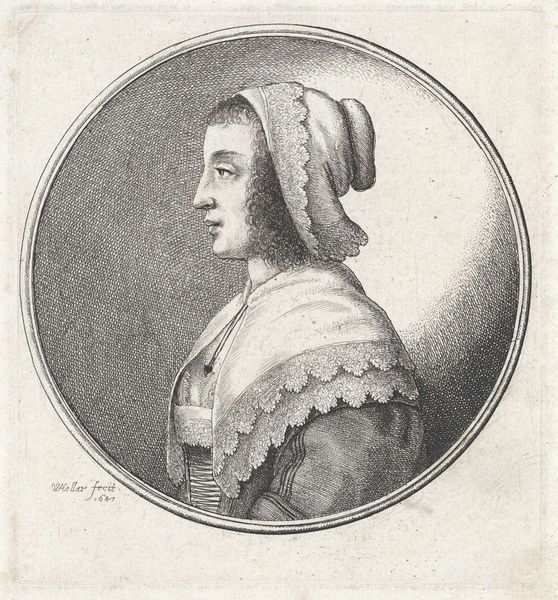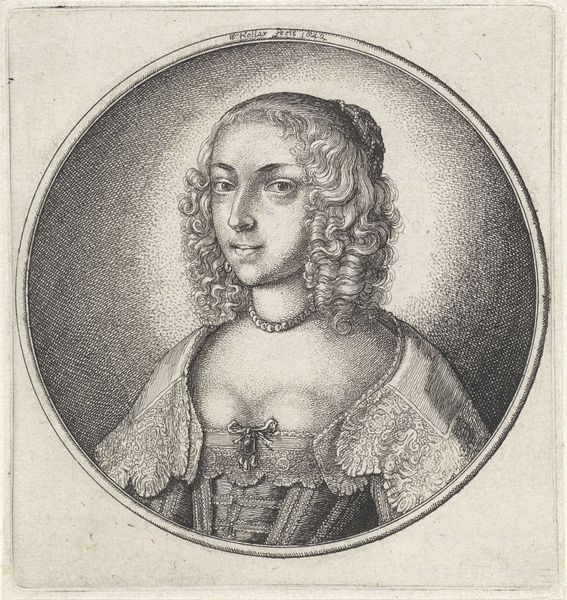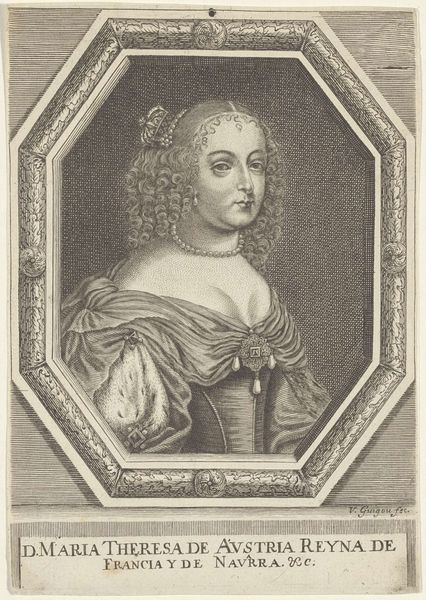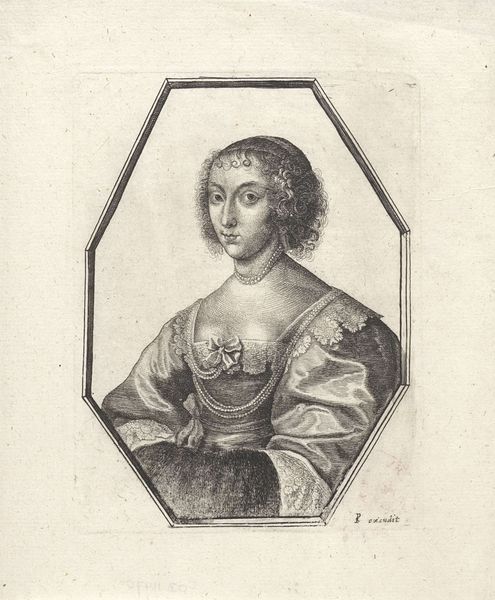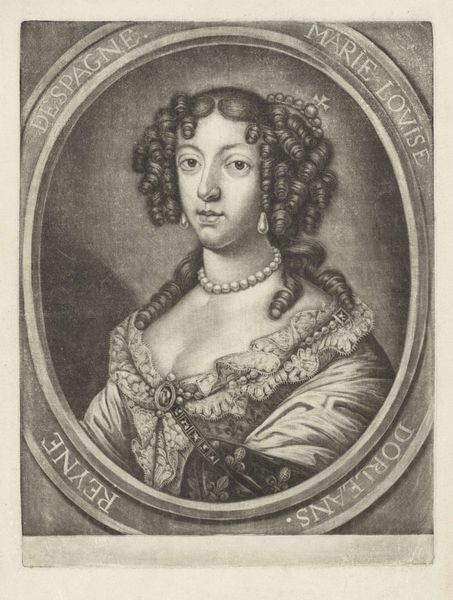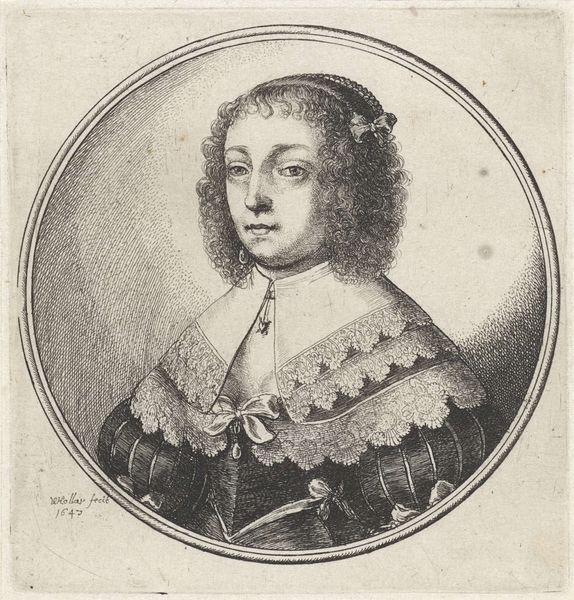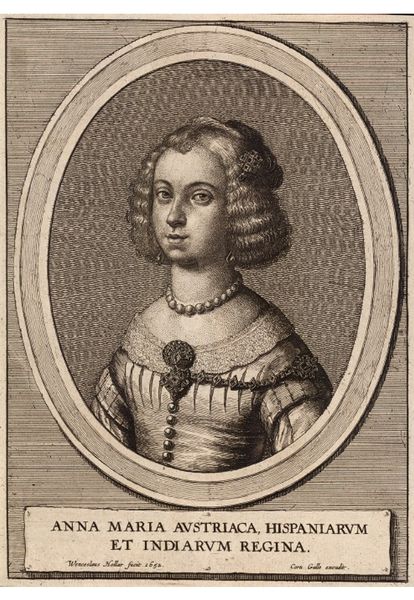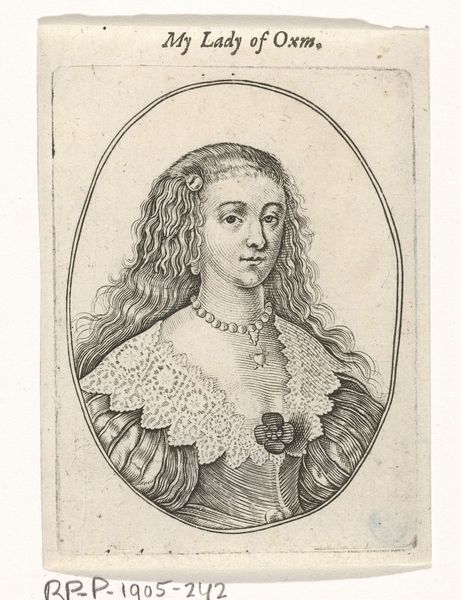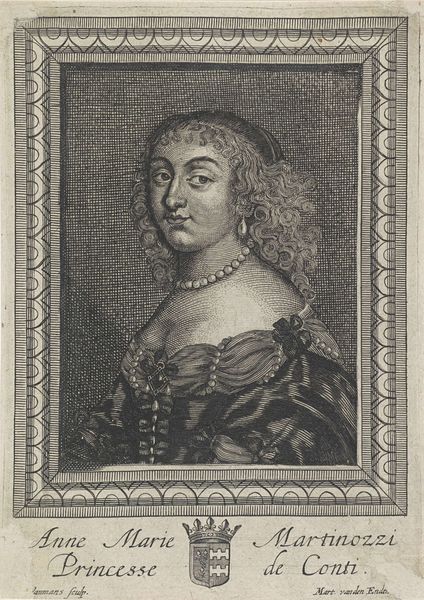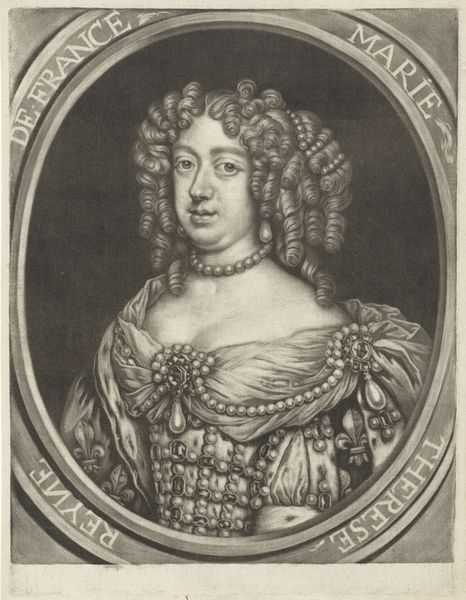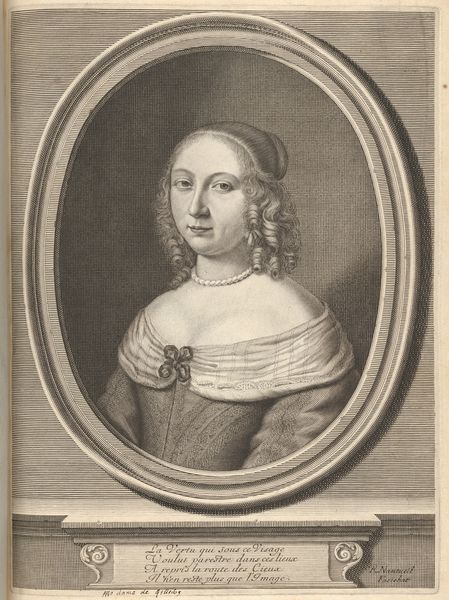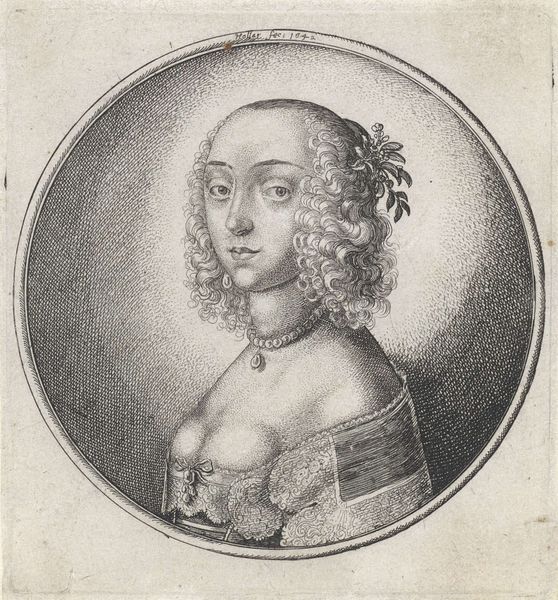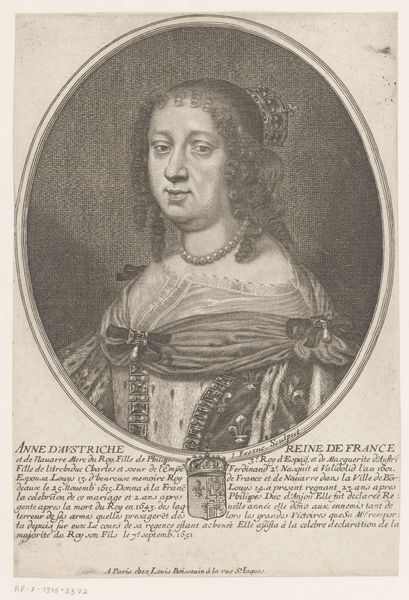
print, engraving
#
portrait
#
baroque
# print
#
old engraving style
#
portrait drawing
#
history-painting
#
engraving
Dimensions: height 102 mm, width 93 mm
Copyright: Rijks Museum: Open Domain
Curator: Standing before us is Wenceslaus Hollar's 1647 engraving, "Vrouw met kanten hoofdkapje en bijpassende kraag," housed right here at the Rijksmuseum. Editor: Oh, wow, the details are so delicate. I'm instantly struck by how the softness of her features is contrasted with the meticulous detail in the lace. It’s almost dreamlike, yet grounded. Curator: Indeed. Hollar was known for his printmaking, and this work exemplifies the skill involved in Baroque portraiture during the 17th century. Notice how the play of light and shadow, even within the tight confines of the print medium, conveys a real sense of volume. Editor: Absolutely. There's a sweetness in her expression. But also, this unwavering… gaze? I feel like I'm catching a glimpse into someone's private world, amplified by the public act of having their portrait rendered, again and again, through these printed iterations. It is strange how reproducible it became for history-painting's purpose. Curator: Precisely. Prints like this had a distinct function. They helped circulate images of people, both celebrated and less known, across geographical boundaries, shaping how individuals and cultures perceived one another. Editor: So, like early social media portraits with fancier filters? Jokes apart, I keep wondering what story that lace could tell. Was it passed down through generations? A symbol of status? Was lace considered very fashionable back in that time? Curator: Well, lace was incredibly valued and regulated back then, signifying wealth and status. Depictions of clothing within these images offered powerful statements, showcasing cultural and social aspirations in art and everyday life. This one is quite an elaborate one. Editor: It makes me think of the layers we wear, even today. The masks and embellishments… But beneath it all, there's a core of humanity, vulnerable and beautifully flawed, like that stray mark near the edge of the circle. I find it grounding, in an odd way. Curator: I see your point. It's a testament to the enduring appeal of portraiture, connecting us across centuries through the shared human experience. Thank you for bringing out an interesting insight about these. Editor: My pleasure. For me, it is a tiny window to a big history, one carefully drawn line at a time. It’s the story between the lines.
Comments
No comments
Be the first to comment and join the conversation on the ultimate creative platform.
